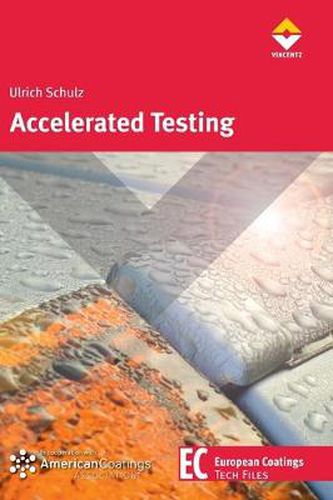Readings Newsletter
Become a Readings Member to make your shopping experience even easier.
Sign in or sign up for free!
You’re not far away from qualifying for FREE standard shipping within Australia
You’ve qualified for FREE standard shipping within Australia
The cart is loading…






From the Foreword Accelerated Testing: Nature and Artificial Weathering in the Coatings Industry is aimed at all those involved or interested in creating, producing, applying, and testing modern high-quality coatings for outdoor use. Coatings are exposed to a great many severe natural stresses that cause a gradual deterioration of the properties which are responsible for the coatings’ very quality. Nevertheless, buyers expect coated products to remain in an as-new condition – which is mostly characterised by a highly attractive appearance and intact surface – for as long as possible. This calls for coatings of high weatherability and long service life. In this book, accelerated testing, through its simulation of the destructive action of natural weathering, is the means for testing this coating quality. Test engineers shoulder much responsibility because not only must the results form the basis for reliable predictions, but they must also be obtained economically and as quickly as possible. Their results are the dominant factor in any decision to take a new coating creation into series production. Accelerated testing has become an indispensable tool in the paint and coatings chemistry as a means of avoiding nasty surprises by coatings in normal use. Other methods of predicting service life are still too unreliable, given the extent of current weathering knowledge. Modern-day, high-quality coatings are highly complex systems which contain numerous essential additives. Not surprisingly, coatings chemistry is therefore sometimes jokingly likened to alchemy. But natural weathering, in all its random manifestations of different impact, is equally complex. Words alone cannot describe how best to simulate the team-like interaction of such a complex system in the laboratory. There is more to successful simulation than applying a standardized test method, or switching on a fully controlled weathering device which has been marketed as an all-rounder. It takes know-how, experience and skill. This book will help such abilities to be acquired.
$9.00 standard shipping within Australia
FREE standard shipping within Australia for orders over $100.00
Express & International shipping calculated at checkout
From the Foreword Accelerated Testing: Nature and Artificial Weathering in the Coatings Industry is aimed at all those involved or interested in creating, producing, applying, and testing modern high-quality coatings for outdoor use. Coatings are exposed to a great many severe natural stresses that cause a gradual deterioration of the properties which are responsible for the coatings’ very quality. Nevertheless, buyers expect coated products to remain in an as-new condition – which is mostly characterised by a highly attractive appearance and intact surface – for as long as possible. This calls for coatings of high weatherability and long service life. In this book, accelerated testing, through its simulation of the destructive action of natural weathering, is the means for testing this coating quality. Test engineers shoulder much responsibility because not only must the results form the basis for reliable predictions, but they must also be obtained economically and as quickly as possible. Their results are the dominant factor in any decision to take a new coating creation into series production. Accelerated testing has become an indispensable tool in the paint and coatings chemistry as a means of avoiding nasty surprises by coatings in normal use. Other methods of predicting service life are still too unreliable, given the extent of current weathering knowledge. Modern-day, high-quality coatings are highly complex systems which contain numerous essential additives. Not surprisingly, coatings chemistry is therefore sometimes jokingly likened to alchemy. But natural weathering, in all its random manifestations of different impact, is equally complex. Words alone cannot describe how best to simulate the team-like interaction of such a complex system in the laboratory. There is more to successful simulation than applying a standardized test method, or switching on a fully controlled weathering device which has been marketed as an all-rounder. It takes know-how, experience and skill. This book will help such abilities to be acquired.